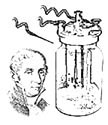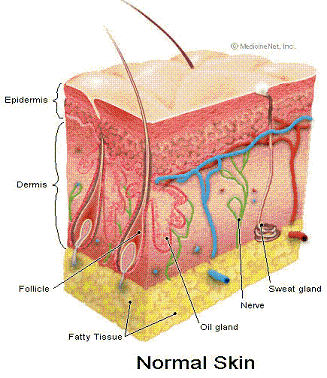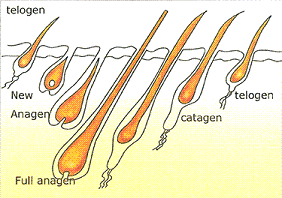Understanding Electrolysis
Electrolysis with Probes
The concept of electrolysis began more than a hundred years ago in Saint Louis Missouri, by Ophthalmologist Charles E. Michel. For many years, he had tried in vain to solve the problem of ingrown eyelashes, which had caused chronic vision problems in several of his patients.
Permanent Hair Removal
According to the NEA (National Electrology Association) this form of hair removal is the only permanent procedure available. Actually, this is not true (many viable studies have shown otherwise): however, it is definitely the most reliable and predictable.
Regardless, conventional electrolysis is an outstanding treatment option for the deep traumatization of follicle tissues for the purpose of permanent hair removal.
How Electrolysis Works
An electrolysis treatment involves the insertion of a sterile probe, the same size as the hair, into the hair follicle opening down to the Dermal Papilla. The dermal papilla is the Electrologist's target. It is the part of the follicle that contains blood and nerves and feeds the growing hair. If the papilla and regenerative cells surrounding it are destroyed, the hair will die. When the probe is in place a low-level electrical current is applied that will destroy the papilla and surrounding cells and loosen the hair in the follicle. The hair is then removed.
Causes of Unwanted Hair
Major factors contribute to the growth of excess hair:
- Heredity
- Racial Characteristics
- Glandular Disturbances
- Medication
- Topical Influences
- Stress
Puberty, pregnancy, and menopause can also cause excess hair growth. During the normal systemic changes in a woman's life, hormone production varies. It is not uncommon for hormones during these times to be unbalanced. Increased male hormones (androgens) can be present which may result in unwanted hair growth.
Electrolysis FAQ's
- Is Electrolysis Permanent? - Electrolysis has been shown to be permanent in over a century of use. Its permanency has been well recognized by physicians and is testified to by hundreds of scientific articles in well respected medical journals and publications. Of course, as with all procedures involving human beings, there will always be instances where 100% permanency is not achieved, but the permanency rate is approximately 93% of all people treated worldwide.
- Is Electrolysis Safe? - In the entire over 120 year history of the procedure, the safety and success has been well documented. Today's technicians utilize modern scientific methods of sterilization, disinfection and antisepsis for the equipment they use, and follow guidelines that are laid down by the Centers for Disease Control and professional electrology organizations and societies.
- Is Electrolysis Painful? - The treatment sensations have been described in varying ways and depends upon many variables. The most commonly used descriptors are "tingling", "slight heat" and a "stinging" sensation. Well trained technicians make it a priority to work within the comfort level of the patient and will adjust machine settings, probe sizes and length of session to each individual's tolerance level. Never hesitate to tell your technician exactly what you need and can tolerate!
- Is Electrolysis Expensive? - When you consider the lifetime costs of shaving creams, razors, tweezers, waxes, depilatories, not to mention all the time and pain involved -- or all the remedies that are expensive yet completely ineffective or even dangerous -- the cost for electrolysis is extremely affordable. Electrolysis is indeed the most cost effective treatment available to get rid of unsightly and embarrassing hair for good!
- Is Electrolysis Dangerous? - The amount of electrical current used is extremely small and poses no hazard. Electrolysis is mechanically safe and controlled at every stage of its application.
- How Many Treatments? - Electrolysis involves a series of treatments. Many hairs will be eliminated with only one treatment, but some will need two or more treatments to achieve permanency. Electrolysis involves a series of treatments over a period of time. The length of time depends on the amount of hair, its coarseness, the cause of the excess hair, and many other factors, but once the dermal papilla has been eliminated, the hair is dead and will not regrow.
The Treatment Procedure
The insertion of the electrolysis probe is much easier and far less intimidating than most
people believe. The "needle" is actually a blunt-ended, highly flexible probe which never
pierces the skin. There is no blood or pain involved. It slides effortlessly down a pre-existing
shaft, like a hand into a glove.
Find the follicle opening with the tip of the probe, match the angle of the hair growth with the
probe, then slide it downward until it stops at the DERMAL PAPILLA. Once the probe is
correctly placed, depress the foot switch on your electrolysis unit. A mild current of energy
exits the probe into the follicle pore destroying the hair growth. Conventional Electrolysis is
so complete and thorough only one of ten hairs may return to require a second application.
More History
1875 The first person to use electrolysis for hair removal was Dr. Charles E. Michel
(1833 - 1913), a St. Louis, Missouri ophthalmologist (eye doctor) who, in 1875, reported
the results of his use of electrolysis in trichiasis (ingrown eyelashes) (St. Louis Clinical
Record, October, 1875, 2:145-148). He had been performing electrolysis since 1869.
Dr. W.A. Hardaway, a St. Louis, Missouri dermatologist, gave the credit
for the first use of electrolysis to Dr. Michel (Transactions of the
American Dermatological Association, 1878, 4:337-340.) In this paper,
Dr. Hardaway described his own results and those of others; an
indication that numerous other physicians were also performing
electrolysis.
1880 - 1900 The use of electrolysis became well known in the latter part
of the nineteenth century. During this time, Dan Mahler established an
electrolysis practice, and subsequently, an electrolysis equipment firm.
The family business exists today as the Instantron Company, which has
been operating continuously for over a century and is one of the world's
largest suppliers to the electrolysis profession.
1916 Paul N. Kree, of New York, developed the multiple needle
technique for galvanic electrolysis. He was instrumental in the
increased marketing of electrolysis services to the general public.
Electrolysis spread from the medical profession to lay electrologists.
The Kree Company dominated the performance and teaching of electrolysis in
North America until the late 1970's.
1924 Dr. Henri Bordier, of Lyon, France, developed the method of thermolysis
(also called short-wave, diathermy, high-frequency etc.) Medical literature of
this period indicates that thermolysis was probably attempted as far back as
1910, in Germany by Dr. Eitner.
1925 Dr. A. Rostenberg introduced thermolysis into the North American
medical journals.
1928 Dr. Mildred Trotter published her classic article proving shaving does
not affect hair growth.
1940's New equipment eliminated the crude spark-gap diathermy machines,
which provided an unpredictable performance. Thermolysis became more
widespread with the use of the simplified and more consistently reliable vacuum
tube machines. Arthur Hinkel and Henri St. Pierre applied for the patent of their
blend machine in 1945 and received it in 1948.
1956 Gordon Blackwell began publishing Electrolysis Digest, and continued
until 1986. His reviews and critiques were vital to the dissemination of helpful
information to electrologists throughout the world.
1968 Arthur Hinkel and Richard Lind widely publicized the blend in their text, Electrolysis, Thermolysis and the Blend. Hinkel formalized the concept of intensity x duration = units of lye (treatment energy), which is fundamental to a better understanding of electrolysis. The work of Hinkel and St. Pierre was brilliant, conceptually and technically, and of great assistance to a better scientific understanding of electrolysis.
1970's Electrolysis equipment became much more reliable and simple to use with the development of transistorized equipment. In November, 1979, the Copperwaites of Toronto established International Hair Route, a publication which continues to print articles of interest to all electrologists.
1980's Computerized electrolysis equipment became smaller, more reliable, and easier to use. Mr. Mark Van Orden, of the Fischer Company, was able to incorporate Hinkel's formula into programmable computerized epiltors. The AIDS virus stimulated development of pre-sterilized, disposable needles. In the early 1980's, Drs. Toshio Kobayashi and Shiro Yamada described their technique of high-powered thermolysis, using an insulated needle.
1990's Present Day Standardized training and improved equipment are making electrolysis more popular and more accessible to people around the world. It is still the only method recognized by the FDA as Permanent Hair Removal.
Hair Growth Stages
Skin Deep Electrolysis uses state-of-the-art equipment for total control throughout the treatment.
2841 Hathaway Road Richmond, VA. 23225 (804) 320-3300 By Appointment Only



